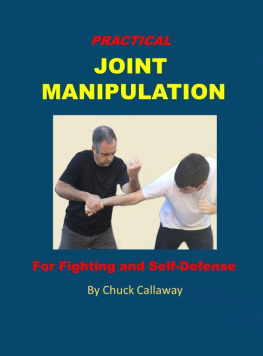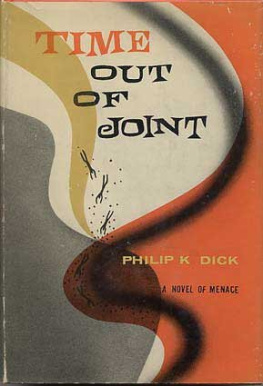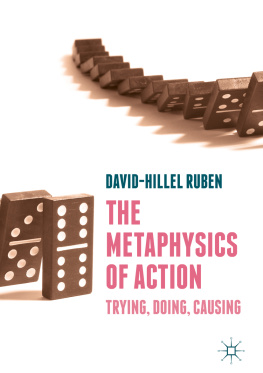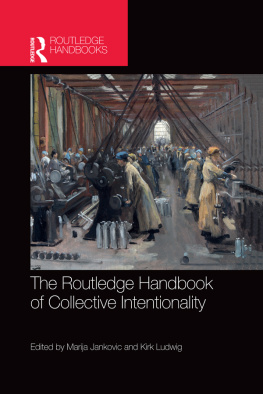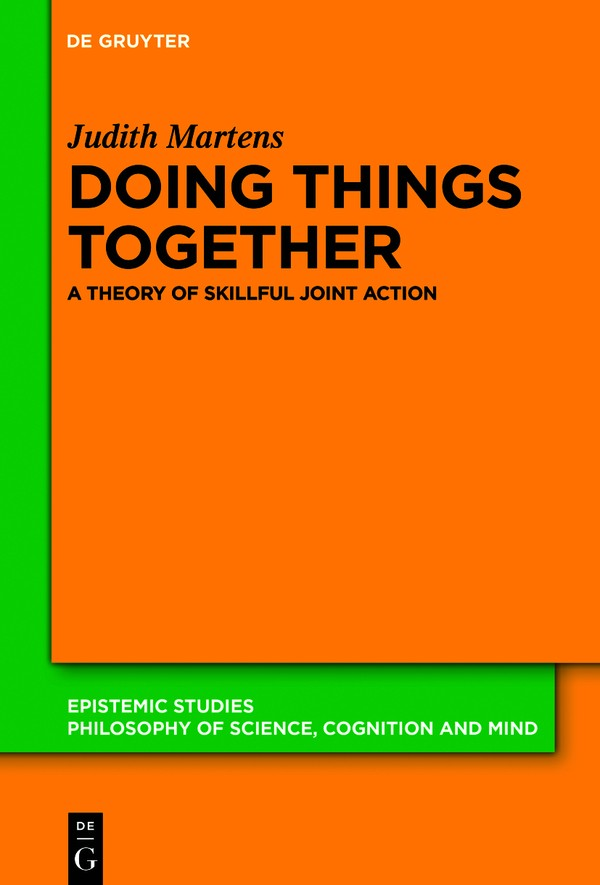Epistemic Studies
Philosophy of Science, Cognition and Mind
Edited by
Michael Esfeld
Stephan Hartmann
Albert Newen
Katalin Balog
Claus Beisbart
Craig Callender
Tim Crane
Katja Crone
Ophelia Deroy
Mauro Dorato
Alison Fernandes
Jens Harbecke
Vera Hoffmann-Kolss
Max Kistler
Beate Krickel
Anna Marmodoro
Alyssa Ney
Hans Rott
Wolfgang Spohn
Gottfried Vosgerau
Volume
ISBN 9783110670172
e-ISBN (PDF) 9783110671315
e-ISBN (EPUB) 9783110671339
Bibliographic information published by the Deutsche Nationalbibliothek
The Deutsche Nationalbibliothek lists this publication in the Deutsche Nationalbibliografie; detailed bibliographic data are available on the Internet at http://dnb.dnb.de.
2020 Walter de Gruyter GmbH, Berlin/Boston
To Bas, Wil & Erna
Introduction: A Multidimensional Understanding of Acting Together
1.1 Doing Things Together
In everyday contexts we do numerous things together. We walk together, we cook, eat, and drink together, do chores together, and engage in more complex activities such as building complex machines, work in highly structured organizations, and play in bands and orchestras together. Whether we cycled to work together or by sheer coincidence cycled to work almost at the same time and only a few meters apart, makes a difference in the way we prepare for the cycling, do the cycling, and experience the cycling. What this difference between parallel and joint action consists in is hotly debated. This debate on joint action is shaped by both philosophers and psychologists. Their traditions give them different starting points and different worries, leading to different theories. In recent scholarship, there is a tendency to distinguish between emergent coordination and planned coordination. I will argue that this pushes us to a position of dualism, a strict division between two kinds of joint action, which I deem problematic. Such a push towards two processes or conceptualizations through which to understand joint action has several consequences. For example, certain phenomena become understudied because they do not fit nicely with the distinction. The transition and relation between the two kinds of joint action become harder to conceptualize because we formulate the conceptualization of the one in contrast to the other.
The tendency to introduce and use binary distinctions, so I will argue, is not unique to the study of joint action. In fact, in this book I will point at several different binary distinctions, which are all intuitively appealing but fail to give us the tool to conceptualize many everyday phenomena. I will also argue that these binary distinctions relate to one another. The four binary distinctions that I will focus on are:
Automatic versus controlled processes
Mere bodily movements versus full-blown intentional actions
Emergent coordination versus planned coordination
Joint action versus parallel action.
These binary distinctions stand in complex relations to one another. Take, for example, distinction 2. The distinction between mere bodily movements and (full-blown) intentional action has a strong relation to whether the process can be controlled by the agent or happens to the agent. Reflexes have often been understood as mere bodily movements. Mere bodily movements are thought to occur automatically and therefore to be out of reach for the agent to control. I will argue, however, that automatic and controlled should not be understood as two opposites: there are processes that can be described as both controlled and automatic. This has an impact on the distinction between mere bodily movements and intentional actions. A similar relation also exists between distinctions 1 and 3, which makes it harder to conceptualize the space between emergent coordination and planned coordination. In all of these cases I will argue that it is a mistake to think about the distinctions as clear-cut dichotomous distinctions. Instead, the two opposites should be understood as ends of spectrums. In the case of the binary distinction between automatic processes and controlled processes, I will also argue that two distinctions are mixed up, namely the spectrum from automatic to non-automatic processes, and that from controlled to not-controlled processes.
A better understanding of the reason why I want to move away from a binary distinction between joint action and parallel action becomes available once we have gone through the first three binary distinctions and their problems. By moving towards more gradual distinctions and multiple factors that weigh into the success of a joint action, we also open up the intermediate space that lies between joint action and parallel action.
I develop two claims: (1) There are several functions that help human agents coordinate, which entails that joint action can be best understood by understanding the differences but also the interrelatedness of these different types of coordination. (2) In order to understand the different forms of coordination and their contribution to join action we need a multidimensional conceptual space. This multidimensional space will allow us to understand the jointness of an action in a more encompassing way.
The notion of control and how it relates to the dichotomy between automatic and non-automatic processes will be central in the book. I argue that the concept of control offers us a possibility to a better, more gradual, understanding of emergent coordination and planned coordination and a richer and more varied understanding of the jointness of our actions. This allows me to step away from the dichotomy between joint action and parallel action. I will use a provisional three-way distinction of levels of control that we find in skillful action (These three levels of control provide an understanding of different ways in which we can coordinate our actions, leading to different ways of acting together. Control and coordination are two core elements that I will explore in detail in the second part of the book. A third element, relating to what it feels like to act together, will also be explored. This element of togetherness or sense of togetherness, I argue, can arise from the different forms of coordination, as well as from situational and historical factors.
When we ask what we mean when we say that a behavior is automatic or a process is automatic, the answer will be different depending on the specific capacity we are interested in. For example: decision-making, language processing, or social cognition. Traditionally, four features were assumed to coincide when a process was said to be automatic (see also chapter two).
Table 1: Following four horsemen of automaticity.
| Automatic | Non-automatic |
|---|
| Absence of (conscious) intention | Intentional |
| Absence of conscious awareness | Conscious |
| Uncontrolled (inability to disrupt) | Controlled (ability to disrupt) |
| Efficient operation (fast and not/hardly needing working memory capacity) | Time consuming and using cognitive resources (slow and consuming working memory capacity) |
The four features were thought of as a package deal in which you always get all four together. When a process was said to be automatic this implied, for example, that it also was unintentional and effortless. Studies have shown, however, that the four different features can be dissociated, creating problems for the traditional view (dissociation of the different features of the package deal and the gradual understanding of some of the individual features render inadequate the traditional, dichotomous model (automatic/non-automatic) for covering many phenomena we encounter on a day to day basis. The perniciousness of this model can only be explained by its intuitive appeal. Chapter two will give an overview of the different features that we typically associate with automatic processes, providing reasons to adopt a model where the distinction between automaticity and non-automaticity is understood through a multidimensional space with several features. Secondly, it will lead us to a model where these features of automaticity are partly understood as gradual. Overall, this will allow us to move away from a strong form of dualism and create room for phenomena that combine automatic and non-automatic processes or are best described as in-between either categorization.






